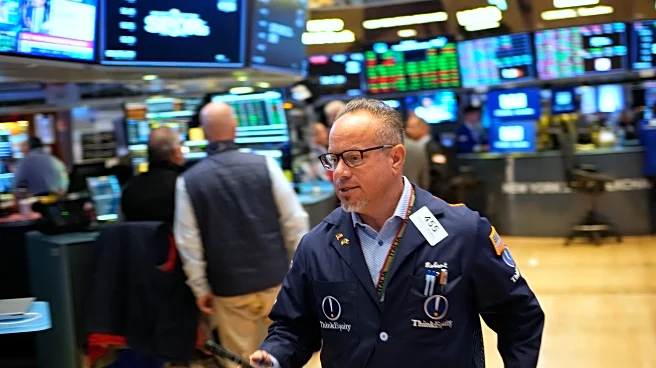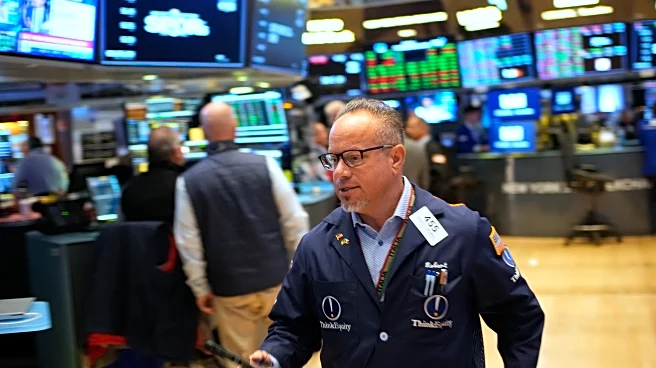What's Happening?
Stocks on Wall Street rose on Wednesday, driven by a series of quarterly earnings reports from U.S. companies and several economic updates. The S&P 500 increased by 0.5%, the Dow Jones Industrial Average rose by 62 points, or 0.1%, and the Nasdaq composite
climbed by 0.8%. This marks a reversal from the previous day's dip, with major technology stocks like Nvidia and Alphabet leading the market. Industrial companies also contributed to the market's rise, with McDonald's reporting increased sales due to the return of its Snack Wraps, and International Flavors & Fragrances surpassing profit forecasts. However, Axon Enterprise and Live Nation Entertainment saw declines due to weaker profit forecasts and results falling short of expectations, respectively. The earnings reports provide crucial insights into consumer behavior, business performance, and economic conditions, especially during the ongoing government shutdown, which has halted important monthly updates on inflation and employment.
Why It's Important?
The current earnings season is significant as it offers Wall Street valuable information on the U.S. economy amidst a government shutdown that has paused key economic reports. The shutdown has left investors, economists, and the Federal Reserve without comprehensive data on inflation and employment, making corporate earnings reports a vital source of economic insight. The ADP report showing a rise in private payrolls and the Institute for Supply Management's report on the services sector's expansion provide partial views into the job market and business activity. These reports are crucial as the Federal Reserve navigates a challenging economic landscape marked by a weakening job market and persistent inflation. The Fed's recent rate cut aims to support the economy, but further cuts are debated due to inflation concerns. Investors are closely watching these developments, with expectations for another rate cut in December now tempered.
What's Next?
The Federal Reserve faces a complex decision-making process as it considers further interest rate cuts. The ADP report and other economic indicators suggest that the labor market is weakening, which could prompt the Fed to cut rates again in December. However, the persistent inflation poses a risk, as lowering rates might exacerbate inflationary pressures. Investors are currently forecasting a 65% chance of a rate cut in December, down from a 90% chance before the last cut. The Fed's actions will be closely monitored, as they have significant implications for economic growth and stability. Additionally, Treasury yields have risen, reflecting market adjustments to these economic signals. The ongoing government shutdown adds uncertainty, making private economic updates and corporate earnings reports even more critical for understanding the U.S. economic outlook.














